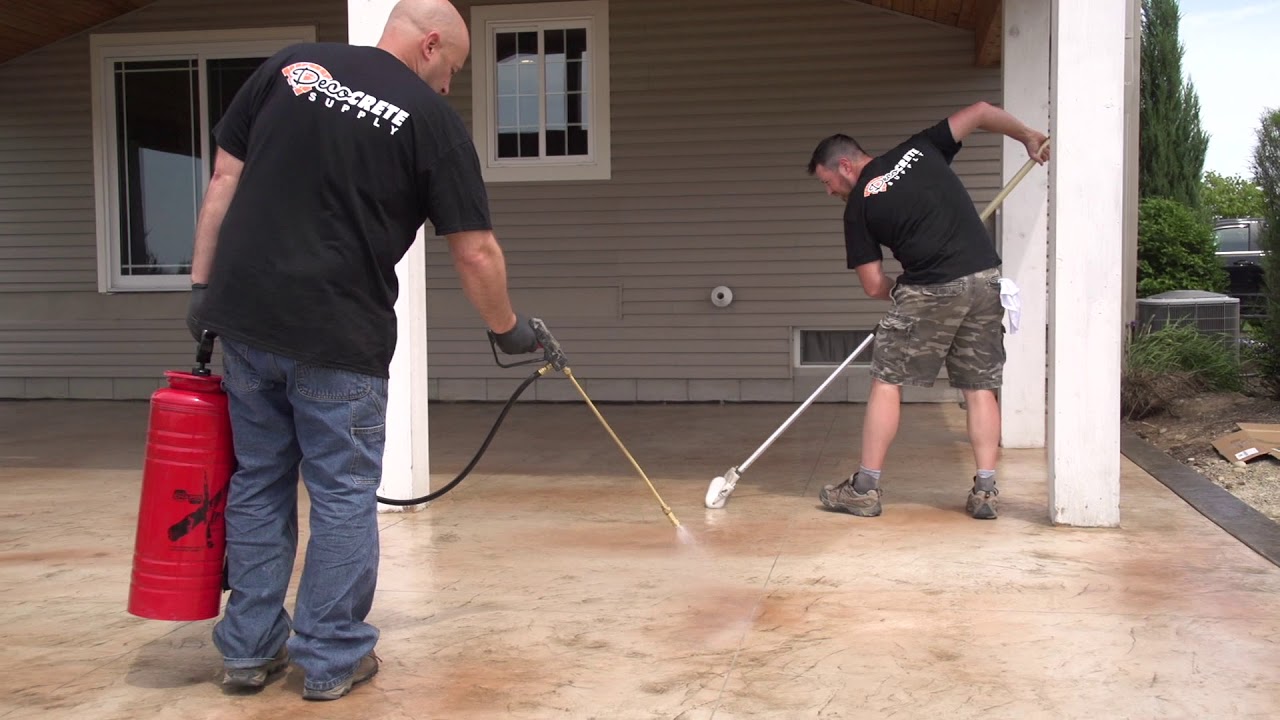Issues related to sealers continue to be one of the most common troubleshooting calls we receive. The complaints are related to bubbling, outgassing, whitening, blushing, yellowing, popping, pealing, and eraser sized dots all over the surface. These results can be avoided in part by simply changing how sealer is applied.
When you dip and roll decorative concrete sealer you are causing these issues by over application of the sealer. Leaving an inconsistent and extremely heavy film of acrylic that loses its ability to "breath" or allow an easier passage of water vapors from below the sealer to escape trouble free into the atmosphere above it. This effectively traps the moisture that otherwise would harmlessly escape through the sealer, which in turn leads to the issues laid out previously.
To create a thinner (more breathable), more consistent, and evenly distributed sealer over any stamped concrete we recommend utilizing a spray and back roll technique. We recommend avoiding a dip and roll application method. It is always safer to under apply sealer. In addition to the improvement in the long-term performance of the sealer you will also realize a faster rate of application and efficiency. Material cost will also be reduced by applying the sealer at a thinner and more desirable thickness that just cannot be achieved with a dip and roll application.
The best sprayers to use with solvent-based, acrylic sealer are the Chapin Extreme Sprayers such as Extreme Dripless Sprayer or the Stainless Steel Xtreme Sprayer. Spraying the sealer needs to be followed by a roller nap, just spraying will not be even where you overlap. By spraying you are applying the sealer at a uniform rate. To back roll the sealer use a 3/4" roller nap since stamped concrete is uneven in texture. The roller nap will pull the excess sealer from the low areas and redistribute the sealer. It is very important the person back rolling the sealer should be immediately right behind the person spraying the material.
Make sure to check out the previous post on how to reduce moisture issues when sealing. And then check out next week on how to efficiently seal concrete edges.
Receive weekly tips and techniques every Friday, www.techniqueoftheweek.org



